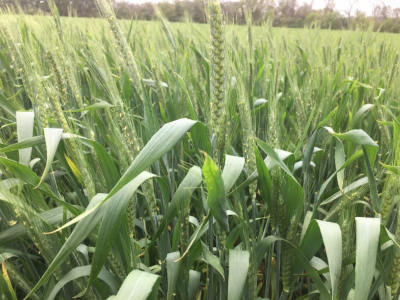By Jeremy Kichler
Fusarium Head Blight (FHB) has been a topic of discussion with growers, consultants and retailers over the last week. Growers need to monitor the stage of development of their wheat crop over the next few weeks in order to make fungicide application decisions. The stage of development of the area wheat crop ranges (March 26) from Feekes Stage 9 to 10.5.1. A great resource for determining growth stages in wheat can be found at
https://sanangelo.tamu.edu/extension/agronomy/agronomy-publications/growth-stages-of-wheat/
The fungi that causes FHB can overwinter on crop stubble such as wheat, barley, and corn, and as soilborne inoculum. FHB is introduced into a field through infected seed or wind-borne inoculum. The fungus is spread rapidly by rain splash and wind. The head, and in particular the open female flower during anthesis (pollination), is most susceptible to infection by Fusarium spores. Some infection can occur during kernel development. Moist environmental (rain, irrigation, fog, and long evening dew periods) conditions favor spore (inoculum) production and infection. Recent models have suggested that three or more rain or irrigation events from anthesis until 3-5 days post-anthesis and temperatures ranging from 77 to 86 degrees F (25 to 30 degrees C) will result in severe scab if inoculum is present and the variety is susceptible.

Wheat in approximately Feekes 10.5.1